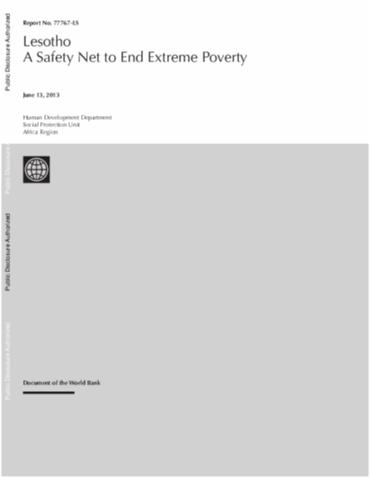The World Bank is a vital source of financial and technical assistance to developing countries around the world. We are not a bank in the ordinary sense but a unique partnership to reduce poverty and support development. The World Bank Group has two ambitious goals: End extreme poverty within a generation and boost shared prosperity.
- To end extreme poverty, the Bank's goal is to decrease the percentage of people living on less than $1.25 a day to no more than 3% by 2030.
- To promote shared prosperity, the goal is to promote income growth of the bottom 40% of the population in each country.
The World Bank Group comprises five institutions managed by their member countries.
The World Bank Group and Land: Working to protect the rights of existing land users and to help secure benefits for smallholder farmers
The World Bank (IBRD and IDA) interacts primarily with governments to increase agricultural productivity, strengthen land tenure policies and improve land governance. More than 90% of the World Bank’s agriculture portfolio focuses on the productivity and access to markets by small holder farmers. Ten percent of our projects focus on the governance of land tenure.
Similarly, investments by the International Finance Corporation (IFC), the World Bank Group’s private sector arm, including those in larger scale enterprises, overwhelmingly support smallholder farmers through improved access to finance, inputs and markets, and as direct suppliers. IFC invests in environmentally and socially sustainable private enterprises in all parts of the value chain (inputs such as irrigation and fertilizers, primary production, processing, transport and storage, traders, and risk management facilities including weather/crop insurance, warehouse financing, etc
For more information, visit the World Bank Group and land and food security (https://www.worldbank.org/en/topic/agriculture/brief/land-and-food-security1
Resources
Displaying 2501 - 2505 of 4907Voices of the Poor : From Many Lands
This is the final book in a three-part
series entitled, "Voices of the Poor." The series
is based on an unprecedented effort to gather the views,
experiences, and aspirations of more than 60,000 poor men
and women from sixty countries. The work was undertaken for
the "World Development Report 2000/2001: Attacking
Poverty." This publication is organized as follows:
Each country chapter opens up with a brief life story. These
Voices of the Poor : From Many Lands
This is the final book in a three-part
series entitled, "Voices of the Poor." The series
is based on an unprecedented effort to gather the views,
experiences, and aspirations of more than 60,000 poor men
and women from sixty countries. The work was undertaken for
the "World Development Report 2000/2001: Attacking
Poverty." This publication is organized as follows:
Each country chapter opens up with a brief life story. These
Turn Down the Heat : Climate Extremes, Regional Impacts, and the Case for Resilience
A Report for the World Bank by the Potsdam Institute for Climate Impact Research and Analytics.
China : Air, Land, and Water - Environmental Priorities for a New Millennium
This report represents a further chapter
in the dialogue between the World Bank and the People's
Republic of China about how to promote economic growth and
protect China's environment. There are three
cross-cutting issues that keep recurring throughout the
analysis. These issues characterize the environmental
management challenge over the next decade: First, the
environmental agenda is becoming so complex and large that
Lesotho : A Safety Net to End Extreme Poverty
The objective of this study is to help the government to decide what role safety net and transfer programs should play in the coming 5 to 10 years. It seeks to answer following three questions: (i) can increased spending on transfers accelerate poverty reduction in the medium to long term?; (ii) which groups and aspects of poverty will it make sense to target with transfers?; and (iii) which programs will have the greatest impact at an affordable cost?







